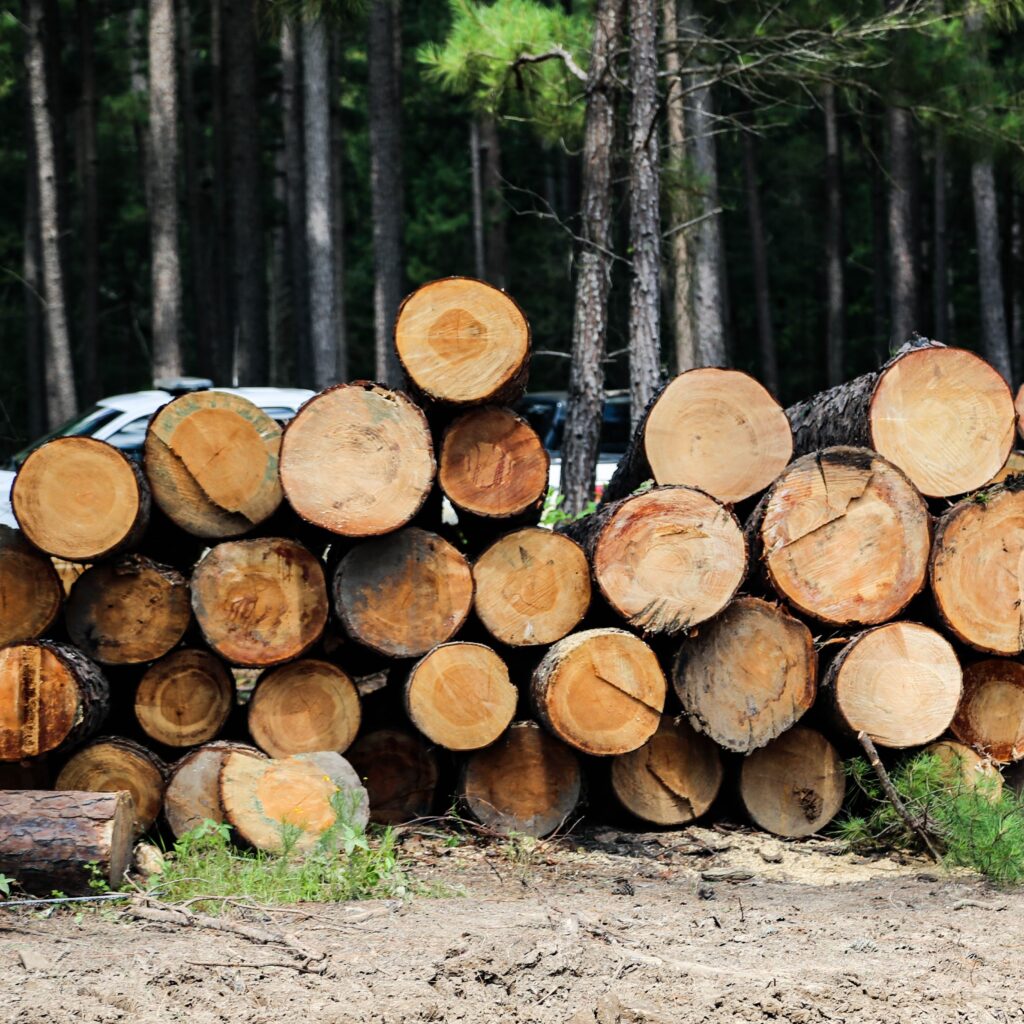In the evolving landscape of sustainable architecture, a quiet revolution is underway, one built not on steel and concrete, but on engineered wood.
At the heart of this movement is cross-laminated timber (CLT), a material that’s gaining traction among architects, foresters and developers. For James Michael Tate, who goes by “Tate,” an associate professor in the College of Architecture at Texas A&M University, CLT represents more than just a building material, it’s a catalyst for innovation, education and environmental stewardship.
“My work has always explored the relationship between design and construction, especially as it relates to material innovation,” Tate said. “Mass timber systems like CLT are particularly compelling because they lend themselves to offsite manufacturing, which is ideal for both rural housing and dense urban projects.”
CLT is a type of mass timber created by bonding together several layers of kiln-dried lumber, each oriented at right angles to the one below. This crosswise arrangement gives the panels exceptional strength and stability in both directions. CLT panels are manufactured off-site in controlled factory settings and then transported to construction locations, where they can be assembled quickly, significantly reducing build times. The panels can be used for all the major structural elements of a building — floors, walls and roofs.
Tate’s research and teaching emphasize the practical and aesthetic benefits of CLT. He notes that the material’s strength-to-weight ratio allows for lighter foundations and faster construction, while its natural beauty invites designers to leave structural elements exposed. “One of the fantastic things about mass timber is that it often becomes part of the architectural expression,” he said.

“Strong timber markets encourage landowners to keep their land forested and invest in stewardship. That’s good for the environment and the economy.”
Dr. Aaron Stottlemyer, Texas A&M Forest Service Forest Analytics Department Head and Texas A&M University Department of Ecology and Conservation Biology Adjunct Professor
Protecting forests, boosting the economy
The implications of CLT extend far beyond its strength and beauty. According to Dr. Aaron Stottlemyer, department head of Forest Analytics at Texas A&M Forest Service and adjunct professor in the Department of Ecology and Conservation Biology, CLT is also a strategic opportunity for Texas’ forest economy.
“Across East Texas, we’re growing nearly double the amount of timber we’re harvesting,” Stottlemyer explained. “That surplus creates a need for new markets. Mass timber — including CLT — is one of the most promising avenues for utilizing that excess in a sustainable way.”
Stottlemyer’s team monitors forest growth and harvest rates across the state, providing critical data for land management and economic development. He sees CLT as a key component in building a “circular economy,” one that supports private landowners, forest industry, conserves working forests, and reduces carbon-intensive construction.
“Texas is 95% privately owned, and when markets slump, you often start to see forests converted to non-forest uses: shopping malls, subdivisions, things made with concrete,” he said. “Strong timber markets encourage landowners to keep their land forested and invest in stewardship. That’s good for the environment and the economy.”
Texas timber on display
This intersection of architecture and forestry will be embodied in the Aplin Center, under construction on the A&M campus, made possible by a generous donation from 1980 Aggie graduate Arch “Beaver” Aplin III, founder and CEO of the wildly popular Buc-ee’s travel centers. The university was thrilled to announce this summer the availability of Buc-ee’s products on campus, a nationwide first.
The three-story, 211,724-square-foot Aplin Center facility will be the largest institutional building in the country constructed entirely with Texas-grown southern yellow pine timber.
The center will house a wide array of experiential learning spaces and amenities, including a campus visitor center, event space, winemaking and fermentation labs, food science facilities, and student-run retail and restaurant operations. Its design and construction are a testament to the university’s commitment to sustainability and interdisciplinary collaboration.
“This building brings together the A and the M of A&M,” Stottlemyer said. “It bridges agriculture and mechanical disciplines, and it’s a visible statement of leadership in sustainable design.”
Tate emphasized the building’s educational value. “It’s the equivalent of having a great textbook,” he said. “Students will be able to see and touch the structure, understand how it’s assembled, and learn from it. That’s invaluable.”
Texas A&M leading in sustainable architecture
“When universities adopt new technologies, society often follows,” Stottlemyer said. “Texas A&M is putting its money where its mouth is and leading in this realm.”
The implications for Texas are significant. As mass timber gains acceptance among developers and designers, in building codes and construction practices, the state is poised to become not just a consumer but a manufacturer of CLT products. That shift could bolster rural economies, reduce carbon emissions, and position Texas as a national leader in sustainable building.
“There’s always going to be a place for steel and concrete,” Stottlemyer said. “But timber — especially when it’s renewable and locally sourced — deserves to be part of the conversation.”
Tate sees the moment as both timely and transformative. “Architecture is about making something that’s of its time but also timeless,” he said. “Mass timber systems allow us to do that in a way that’s beautiful, efficient and deeply connected to place.”

